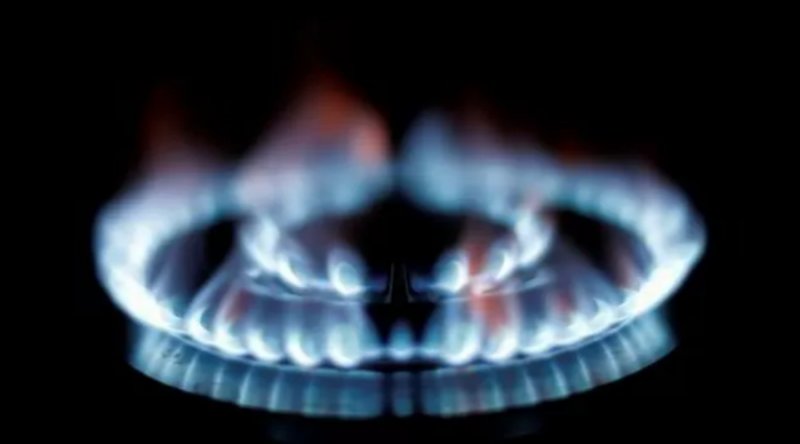PD Proposes Massive Sui Gas Price Hikes, Sparing Lifeline Consumers

ISLAMABAD: Several sources close to the Petroleum Minister have told Business Recorder the Petroleum Division is proposing a massive increase in natural sui gas prices across-the-board except for lifeline consumers, effective July 1, 2022.
sui gas is purchased, transmitted, distributed, and sold by two public sector companies under license from Oil & Gas Regulatory Authority (Ogra), namely Sui Southern Gas Company Ltd (SSGCL) and Sui Northern Gas Pipelines Ltd (SNGPL).
According to the respective license conditions, Natural Gas Tariff Rules 2002, and Section 8 of the OGRA Ordinance 2002, Ogra determines the annual revenue requirements of the two companies.
Petitioning for the determination of Estimated Revenue Requirement (ERR) for a new financial year begins in the third quarter, followed by public hearings and the OGRA decision in the fourth quarter, which is sent to the Federal Government for advice regarding consumer sale prices.
Miftah says he has no intention of raising sui gas prices by 45 percent
In accordance with section 8(3) of the OGRA Ordinance, 2002, such advice must be provided within 40 days of the decision being made.
Estimated Revenue Requirements for both SNGPL and SSGC for FY 2022-23 were determined by the Ogra on June 3, 2022. In FY 2022-23, SNGPL is required to generate Rs261 billion in revenue while SSGCL requires Rs285 billion.
According to the Ogra, SNGPL and SSGC both had revenue shortfalls of Rs. 265 and Rs. 245 billion in the previous year. In the future, circular debt would continue to accumulate due to this disallowance.
In order to recover from consumers, Ogra has notified tariffs for different categories and slabs of consumers. Federal government advice is used to issue such notifications by Ogra. Various economic policies of the Federal Government are reflected in the prices/tariffs for natural gas based on category, including the provision of cheap fuel to households, the control of fertilizer prices, and the promotion of exports.
Consumer gas prices have not always been revised in line with Ogra’s revenue requirements, so full cost recovery from end consumers has not always been possible.
Consumer gas prices have not been adequately revised since FY 2015-16 in accordance with OGRA’s revenue requirements. In March 2022, SSGCL accumulated a revenue shortfall/tariff differential of Rs. 547 billion (SNGPL accumulated Rs. 301 billion). It represents a significant portion of the Rs. 1.232 trillion circular debt in the gas sector.
The current consumer gas prices became effective at the end of October, and if prices are kept unchanged, SNGPL and SSGCL will suffer a combined revenue shortfall of Rs. 165 billion during FY 2022-23, further straining exploration and production companies (OGDC, PLL, MPCL etc.) and gas importing companies (PSO and PLL).
As amended in March, 2022, Section 8 (3) of the OGRA Ordinance, 2002 provides as follows:
Within forty days of the advice referred to in sub-sections (1) and (2), the Federal Government shall advise the Authority of minimum charges and the sale price for each category of retail natural gas consumers for notification in the official Gazette by the Authority of the prescribed price, as determined in sub-sections (1) and (2). The federal government shall ensure that the sale prices so advised do not fall below the authority’s revenue requirements.”
Following an analysis of the gas consumer categories, their consumption over the last financial year, the impact of price changes on various categories of consumers and the need to meet the revenue requirements of gas utility companies, Petroleum Division proposes the following broad principles/parameters for revision of the category-wise consumer gas sale prices:
To improve efficiency and progressivity in the provision of subsidies to domestic consumers, the existing slab structure is proposed to be revised.
In this proposal, the existing slab structure of 7 slabs is revised into 5 slabs by consolidating the last 2 existing slabs; (ii) slabs up to 0.4 hm3 are proposed to be merged with slabs up to 0.5 hm3, and the rate for the merged slab is proposed to be Rs. 173/MMBtu from Rs. 121/MMBtu. In the domestic category, there will be no minimum charge; in the slab up to one hm3, no price change has been proposed. It will remain at Rs 300/MMBtu; (iii) the above (i) to (ii) will protect the poorest consumers; (v) the preceding slab benefit has been proposed to be maintained up to a consumption of one hm3; once consumption exceeds 1 hm3, the preceding slab benefit will be discontinued; (vi) the last two slabs with the highest consumption may be closest to the RLNG average cost. The proposed rate will be Rs1,856/MMBtu from Rs738/MMBtu (151 percent increase); vii) the highest consumption slab may not be allowed to benefit from lower slabs; to ensure this, the highest slab rate will be applicable if consumption in a preceding eleven-month period exceeds 3 hm3, i.e. Rs 3,712/MMBtu exiMMBtu rate up to Rs 1,460 (335 percent increase); By June 2023, the number of preceding months for this calculation will increase from zero to eleven; and (viii) bulk consumers will be charged at the average price prescribed by Ogra with effect from July 1, 2022.
As a result of 95% of consumers falling in the last slab of the existing structure, it has been proposed to consolidate slabs in the Special Commercial (Roti Tandoor) category. Over 3 hm3 slabs will be charged according to Ogra’s Average Prescribed Price. Rates are kept at 50% of the said price for consumption levels below 3 hm3. From Rs 780/mmbtu and commercial, bulk will be charged at Rs 928/mmbtu. A special commercial product (Roti Tandoor) is available for Rs 928/mmbtu from Rs 697 mmbtu.
The proposed increase in price is still much lower than the price of LPG (58% of LPG price only) for commercial consumers, who are currently using LPG as an alternative fuel, despite its higher cost than indigenous gas in terms of energy units.
The general industry (export and non-export) is supplied RLNG at a subsidy rate of $ 6.5/mmbtu in Punjab, which was previously zero-rated. The Finance Division has advised that the rate charged to the export industry in Punjab may be adjusted in accordance with the amount of subsidies allocated for this purpose in the next fiscal year.
This has resulted in a proposal to raise the existing price of S6.5/mmbtu to S9/mmbtu. The full price of RLNG is charged to Punjab’s non-export industry. For indigenous gas provision to industries in other provinces, the following principles are proposed: (i) captive power and process consumers of non-export industries may be charged at Rs. 1,650/mmbtu instead of Rs 1,87/mmbtu – ($ 8 mmbtu); and (ii) captive power units and process consumers of export industries may be charged at Rs. 1,450/mmbtu (USS 7/mmbtu).
In the non-export sector, the proposed rate will be Rs 1,650/mmbtu from Rs 1,054/mmbtu, in the export sector, it will be Rs 1,450/mmbtu from Rs 819/mmbtu.
Due to the ultimate impact of fertilizer feed on farmers, the price of fertilizer feed has not increased much in the past. Price for fuel gas use is proposed to be twice the Average Prescribed Price, i.e., Rs. 1,857/mmbtu, which is about 50% of the Average Prescribed Price.
Feed (Engro) would go from Rs 117/mmbtu to Rs 140/mmbtu, feed (others) from Rs 302/mmbtu to Rs 430/mmbtu. The price of fuel has increased from Rs 1,023/mmbtu to Rs 1,857/mmbtu.
Less efficient power plants are supplied with scarce natural gas at a lower cost, whereas the most efficient ones run on imported sui gas. A proposal has been made to equate the existing tariff with the Average Prescribed Price in order to promote efficiency in the merit order and protect the consumer.
Liberty power has proposed a rate of Rs 2,406/mmbtu from Rs1,881/mmbtu as its new proposed rate for power. The old rate was Rs 857/mmbtu.
Due to the overall consumption and the fact that many CNG stations have switched to RLNG, the CNG and cement sectors are lower on the merit order. As most cement plants have been converting to alternative fuels or operating on RLNG, the price has been proposed at Rs.2,321/MMBtu, which is a 70% and 82% increase over the existing CNG and cement prices, respectively.
All consumer categories except domestic are not subject to changes in minimum charges.
In contrast to Ogra’s estimate of Rs. 546 billion, the proposed increase in sui gas tariffs for various categories of consumers will generate Rs. 666 billion in revenue (SNGPL: Rs. 331 billion, SSGCL: Rs. 335 billion). After the revision in consumer sui gas sale prices, OGRA will adjust the prescribed prices of both gas companies to recover their revenue shortfalls for the previous years as a result of the resultant surplus revenue. This surplus revenue is estimated at Rs. 120 billion.
Mari Petroleum Company Ltd and Pakistan Petroleum Ltd are also expected to be affected by the proposed price increases for power and fertilizer.
A RLNG sale price may be determined and notified by the Ogra under Section 43B of the OGRA Ordinance, 2002 based on the guidelines issued by the government from time to time on “Sale Price of RLNG” for SSGCL, SNGPL, and PLL RLNG consumers.
Ogra may include the cost of RLNG diversion in its mid-year review of the Estimated Revenue Requirement (ERR) for FY 2023.
You can also read about: List of PTI Jalsa Schedules For Upcoming Elections In 2022
